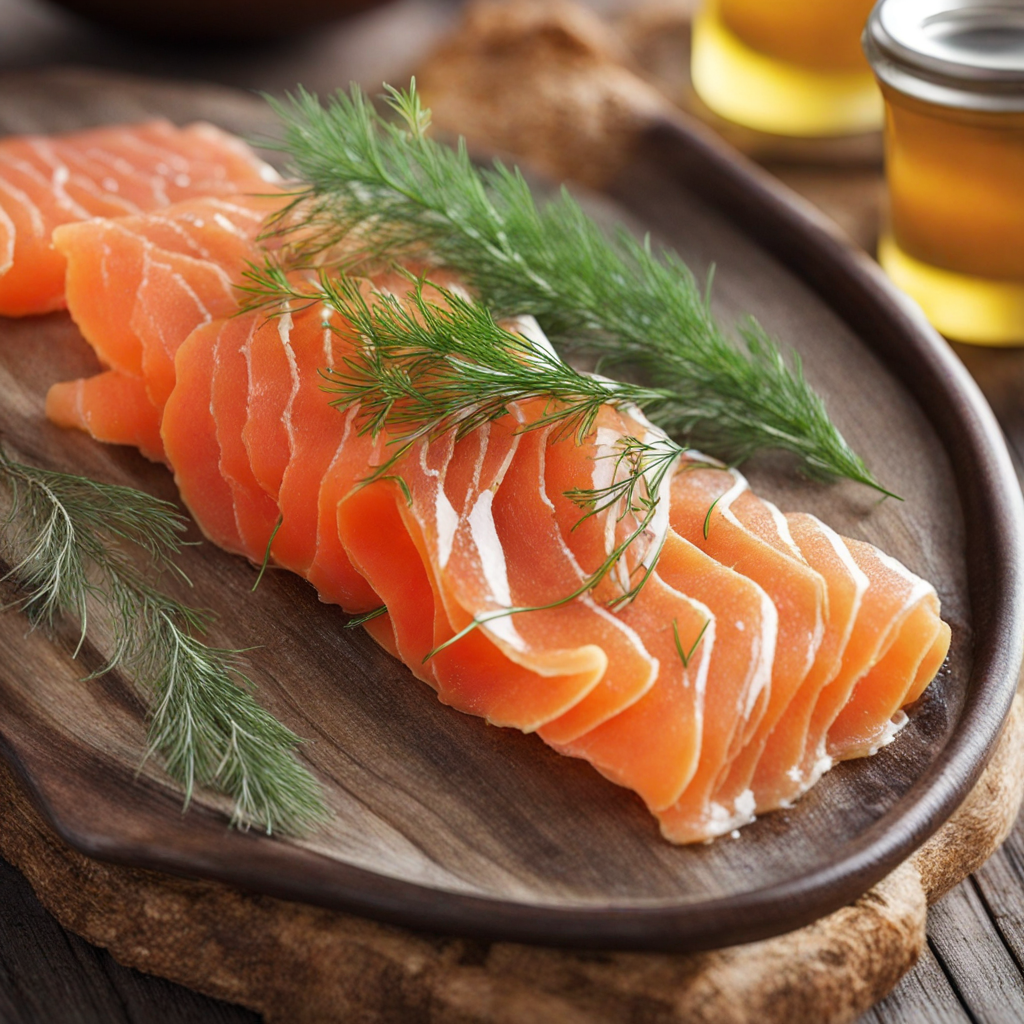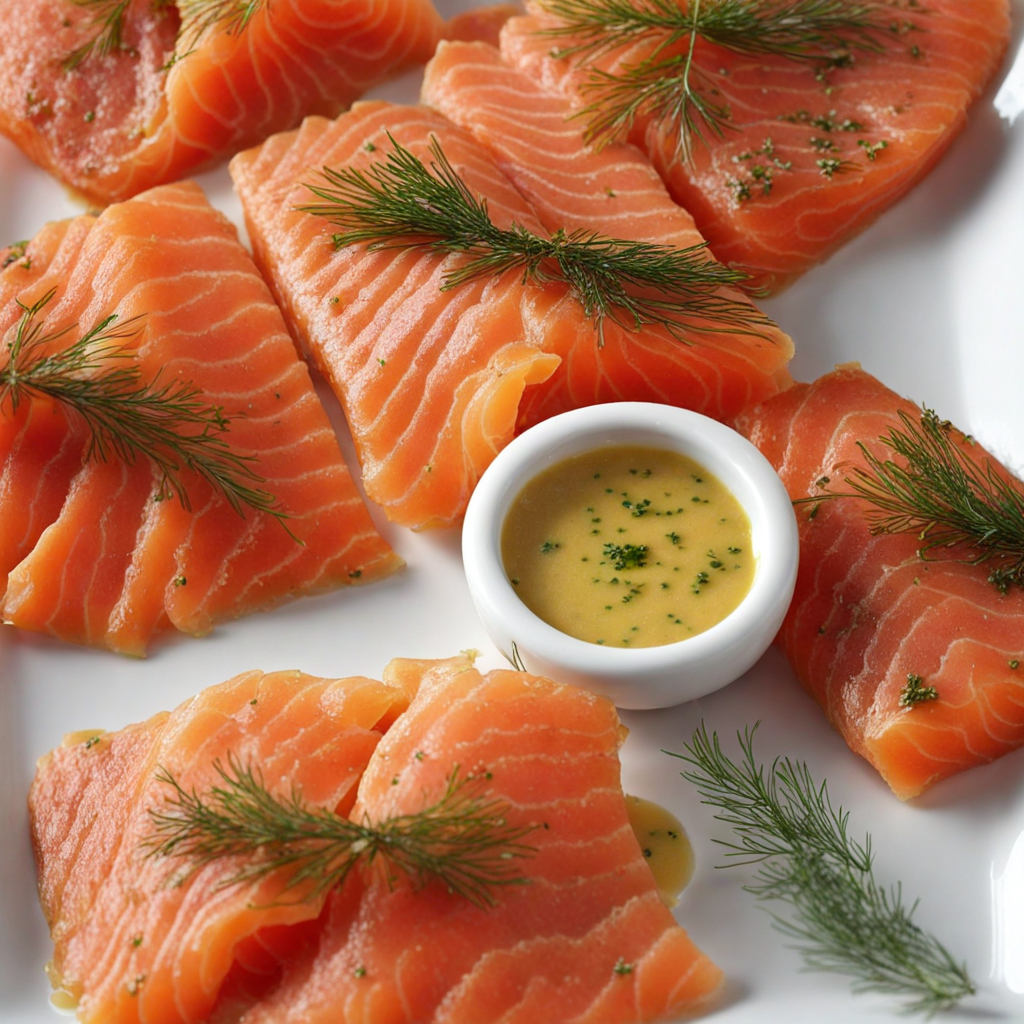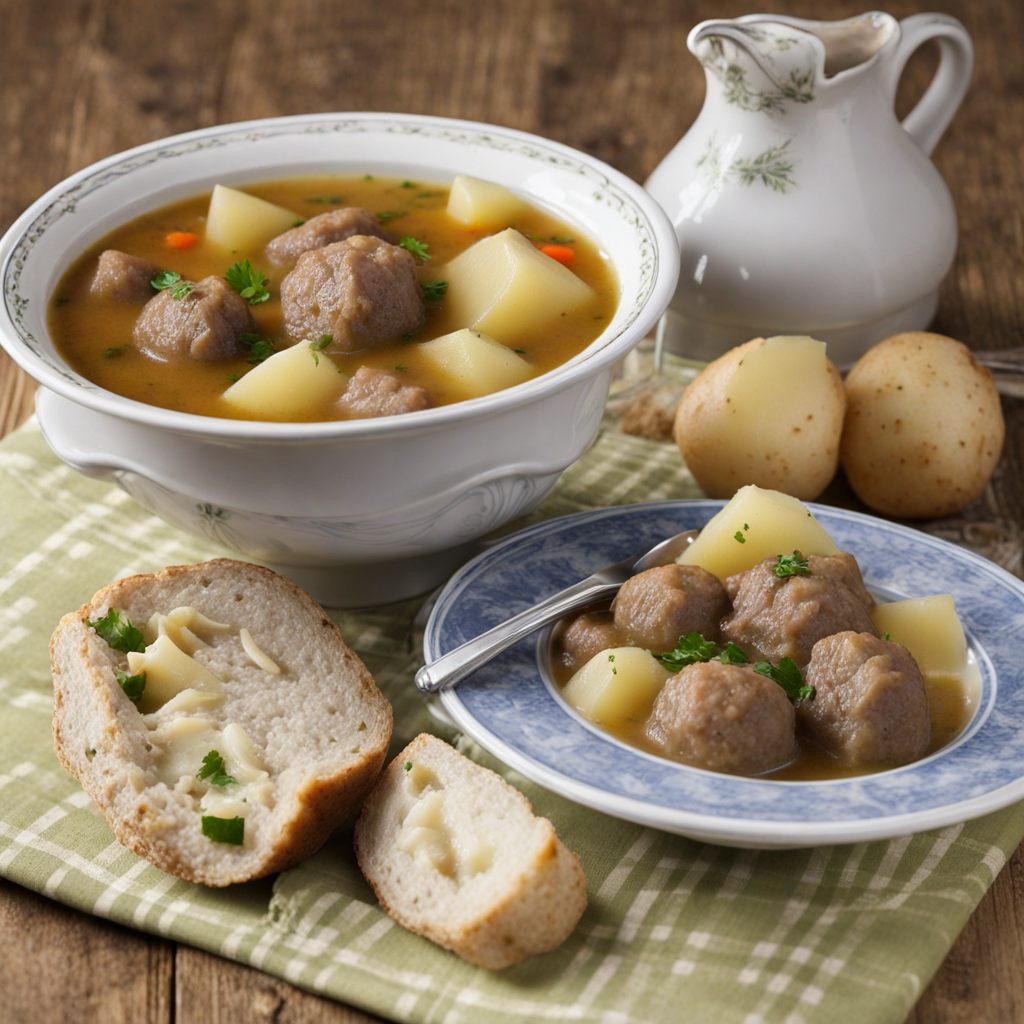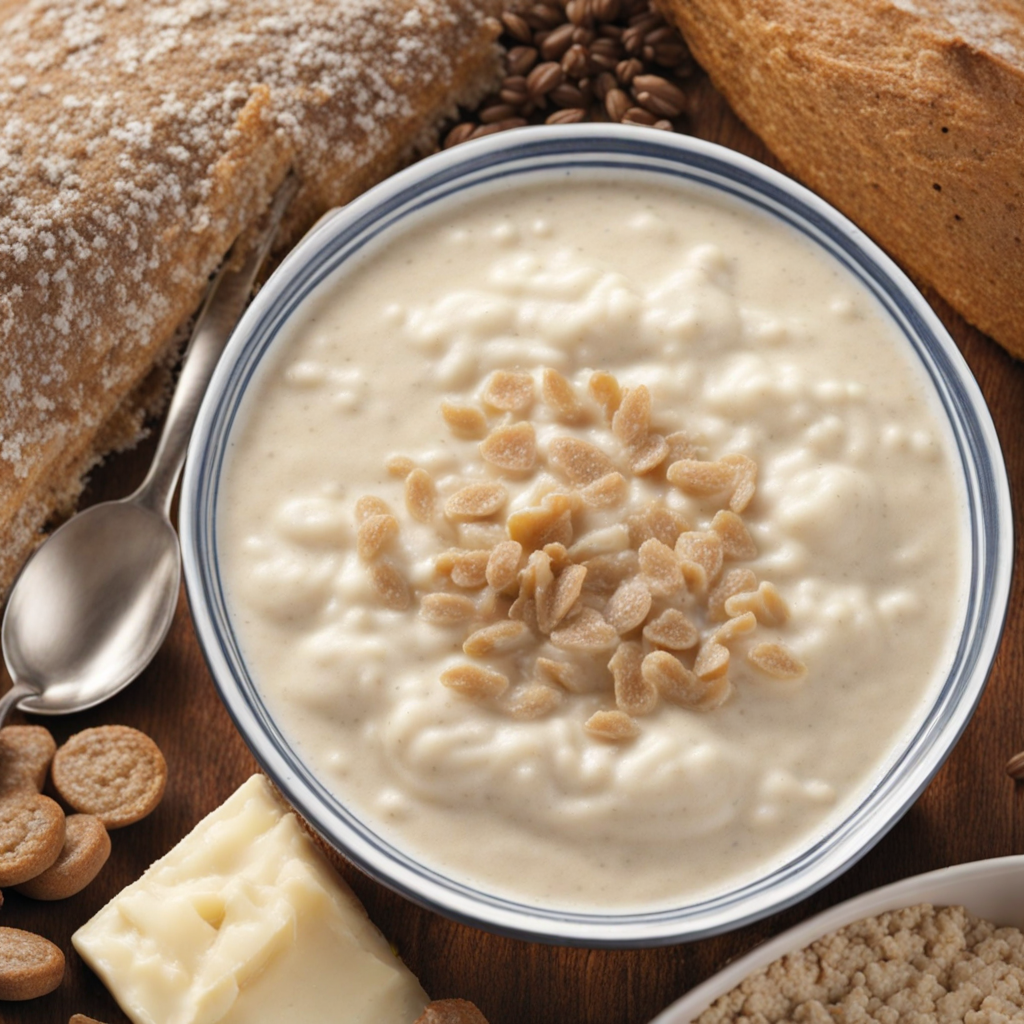Gravlaks
Gravlaks, a traditional Nordic dish, originates from the coastal regions of Norway and showcases the country’s rich maritime culture. This delicacy consists of raw salmon that is cured with a mixture of salt, sugar, and dill, allowing the fish to absorb the flavors while firming its texture. The process of curing salmon dates back to the Viking Age, where fishermen would bury their catch in the sand above the high tide line, hence the name "gravlaks," which translates to "buried salmon." Today, the preparation has evolved, but the essence of this simple yet refined dish remains intact, making it a beloved staple in Norwegian cuisine. The flavor profile of gravlaks is both delicate and complex, offering a perfect balance of sweetness from the sugar, the brininess from the salt, and the aromatic freshness of dill. Accompanying the salmon are often thinly sliced pieces served on a variety of traditional accompaniments, such as crisp bread, mustard sauce, or even a dollop of sour cream. Each bite introduces a delightful mingling of textures and tastes, with the tender, melt-in-your-mouth fish complemented by the crunch of the bread and the creamy sauces, creating a gastronomic experience that highlights the simplicity and beauty of fresh ingredients. Gravlaks is not just a dish; it's an experience that embodies the spirit of Norwegian hospitality. Often served at gatherings and celebrations, this cured salmon is a testament to the country’s deep connection with the sea and its ability to transform simple ingredients into something extraordinary. For those looking to explore new flavors, gravlaks offers a unique opportunity to indulge in the refreshing and sophisticated tastes of Norway, inviting you to savor the essence of its culinary heritage.
How It Became This Dish
Gravlaks: A Culinary Journey Through Time Gravlaks, a traditional Scandinavian dish, particularly associated with Norway, is a testament to the rich tapestry of cultural influences, historical practices, and culinary evolution that define the region. This delectable dish, which consists of salmon cured with a mixture of salt, sugar, and dill, not only tantalizes the taste buds but also offers a glimpse into Norway's maritime heritage and its people's relationship with the sea. #### Origins: The Roots of Gravlaks The word "gravlaks" is derived from the Norwegian words “grav” meaning "grave" or "to dig," and “laks” meaning "salmon." The name refers to the ancient method of burying fish in the ground to cure it, a practice that dates back to the Middle Ages. It is believed that fishermen would catch salmon and bury it in the sand above the high tide line, mixing it with salt and spices to preserve it. This method not only protected the fish from spoilage but also infused it with unique flavors. The origins of gravlaks are closely tied to the necessity of preserving fish before the advent of refrigeration. In a time when fresh food was a luxury, particularly in the harsh climates of northern Europe, curing was essential. The early methods of preserving fish were both practical and ingenious, allowing communities to sustain themselves through long winters. #### Cultural Significance: A Delicacy of the North Gravlaks holds a special place in Norwegian cuisine and culture. It is more than just a dish; it is a symbol of community, tradition, and the connection between the people and their environment. Traditionally served during festive occasions, gravlaks is a staple at Christmas and Easter gatherings, and it often graces the tables during Midsummer celebrations as well. In Norway, gravlaks is typically served with a mustard sauce known as "sennepssaus," which is made from a blend of mustard, sugar, vinegar, and oil. This sweet and tangy sauce beautifully complements the rich, fatty flavors of the cured salmon. It is often accompanied by dark rye bread, crispbread, or boiled potatoes, allowing for a harmonious balance of flavors and textures. Throughout the centuries, gravlaks has evolved from a humble preservation method to a celebrated culinary dish. The practice of curing salmon has spread beyond Norway, becoming popular in Sweden and Denmark, where variations of the dish have emerged, such as the Swedish "gravad lax." Each country has its unique take, but the core principle of curing fish with sugar and salt remains the same. #### Development Over Time: From Tradition to Modern Cuisine The journey of gravlaks through history reflects wider changes in society, technology, and culinary practices. As Norway entered the modern era, improvements in transportation and refrigeration transformed the way food was processed and consumed. The ease of shipping fresh fish and the availability of new preservation techniques led to changes in traditional practices. In the late 20th century, gravlaks began to gain international recognition as part of the broader trend of Nordic cuisine. Chefs started to experiment with the dish, incorporating it into fine dining menus and elevating it beyond its traditional roots. The use of high-quality, sustainably sourced salmon became a hallmark of modern gravlaks, and innovative flavor combinations emerged, incorporating ingredients such as citrus, beetroot, and even exotic spices. The rise of the New Nordic Cuisine movement, spearheaded by chefs such as René Redzepi of Noma in Copenhagen, further popularized gravlaks on the global stage. This movement emphasizes local, seasonal ingredients and traditional cooking methods, breathing new life into classic dishes and inspiring chefs worldwide to explore the flavors of Scandinavia. Today, gravlaks can be found in various culinary settings, from casual brunches to upscale restaurants. It is often featured in charcuterie boards, on bagels, or as a sophisticated appetizer. The dish has transcended its humble beginnings to become a symbol of culinary artistry and creativity, showcasing the versatility of salmon and the timeless appeal of traditional techniques. #### The Contemporary Experience of Gravlaks In contemporary cuisine, gravlaks is celebrated not only for its taste but also for its aesthetic appeal. The vibrant colors of the cured salmon, often enhanced by the use of herbs and spices, make it a visually stunning addition to any meal. It is frequently garnished with fresh dill, capers, and red onions, adding layers of flavor and texture. Home cooks have also embraced gravlaks, with many attempting their own versions using a variety of curing methods and flavorings. The DIY approach has made gravlaks accessible, allowing people to experiment with different ingredients and personalize their recipes. This resurgence in home cooking reflects a broader trend towards culinary exploration and a desire to connect with traditional practices. In Norway, gravlaks is more than just a food; it is a way to celebrate heritage and foster community. It serves as a reminder of the importance of preserving culinary traditions while also embracing innovation. As families gather around the table to enjoy this beloved dish, they are not only savoring the flavors of the past but also creating new memories to carry forward. #### Conclusion: A Timeless Tradition Gravlaks is a dish steeped in history, embodying the spirit of Norwegian culture and its relationship with the sea. From its origins as a practical preservation method to its status as a cherished delicacy, gravlaks has evolved while remaining true to its roots. It serves as a culinary bridge between the past and the present, reflecting the resilience of tradition in an ever-changing world. As we continue to explore and celebrate the flavors of gravlaks, we honor the generations of fishermen and home cooks who have contributed to its legacy. This dish is not just about the salmon; it is about the stories, the communities, and the cultural significance that make gravlaks a timeless treasure in the world of food. Whether enjoyed in a traditional setting or reimagined in modern cuisine, gravlaks stands as a delicious reminder of Norway's rich culinary heritage.
You may like
Discover local flavors from Norway







